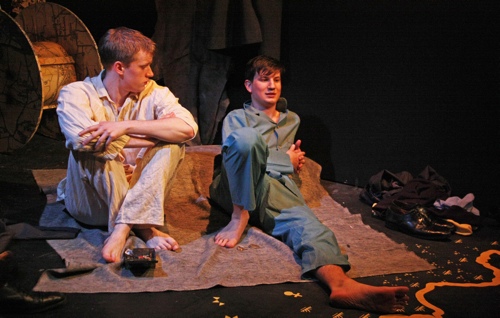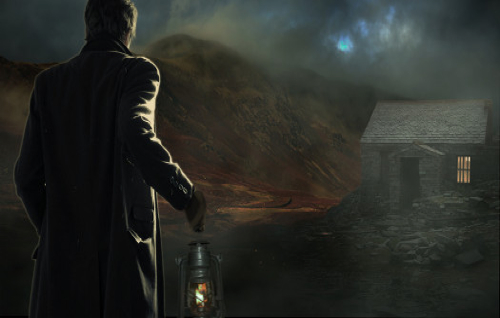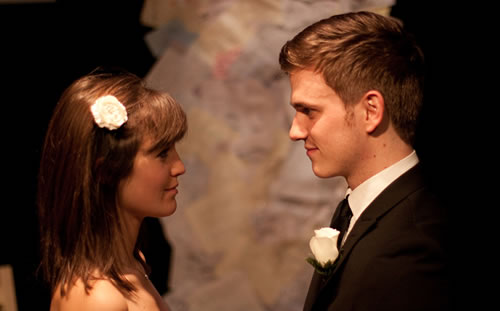
The Custard Boys looks at a group of evacuated London boys who have found themselves in a small Norfolk village. The plight of Second World War evacuees has been examined in various ways before, but never quite like this. Glenn Chandler’s adaptation of John Rae’s controversial 1961 novel has a tangible sense of vivacity. Directing ones own work can be a difficult path to tread; there is a danger of being too close to the material. Chandler, however, makes a successful directorial debut.
Charlie Cussons is a strong central force in the production. Cussons captures the awkward, pensive Curlew as he tentatively grows closer to the young refugee Stein, tenderly played by Andrew St. Pierre. Despite moments of tenderness and electricity between the two, the relationship never wholly achieves the truthfulness necessary to make Curlew’s clumsy declaration of love completely believable.
The fantastic ensemble cast deserves credit for their cohesive fluidity. They playfully transform the stage using the composite set and play dress-up in order to become adult characters. These characters are suitably heightened, the audience seeing the caricatures the boys see, though they are still portrayed with a lightness of touch. Comic turns from Jack Cameron and Tom Sanderson as Curlew’s parents, as well as Marco Petrucco and Jack Elliot Thomson as Doctor Freeman and his wife particularly stood out. Thomson and Petrucco both delivered very touching soliloquies as the eager-to-please Peter and troublesome villager Willy, and Jack Cameron as Lewis held the understated control of a natural leader. In vocal and physical dexterity Josh Hall outshone the cast, jumping from pedantic know-it-all Felix to the perverse and fearsome Headmaster with incredible ease.
Cecelia Carey’s set design consisted of découpaging the black box theatre with weathered maps and giving the boys cable reels and planks to play with to create the various settings. Costumes were appropriate throughout, and the functional additions to the uniforms were shrewdly chosen. The simplicity of Elliot Griggs’ lighting design was the key to its success in so effectively conjuring the appropriate atmospheres.
Chandler’s writing adeptly balances the boys’ naivety with an appreciation of the true horrors of war. There are moments when some development feels absent, however, and the final dénouement leaves the boys all too unmoved. Chandler’s direction, though, was generally sensitive and the use of humour was well timed.
The themes of racial and sexual intolerance are still as relevant as they were fifty years ago, and with a renewed national focus on intolerance in schools, this play certainly has contemporary poignancy.
**** (4 stars)
Runs until 12th May
More info



Be the first to comment